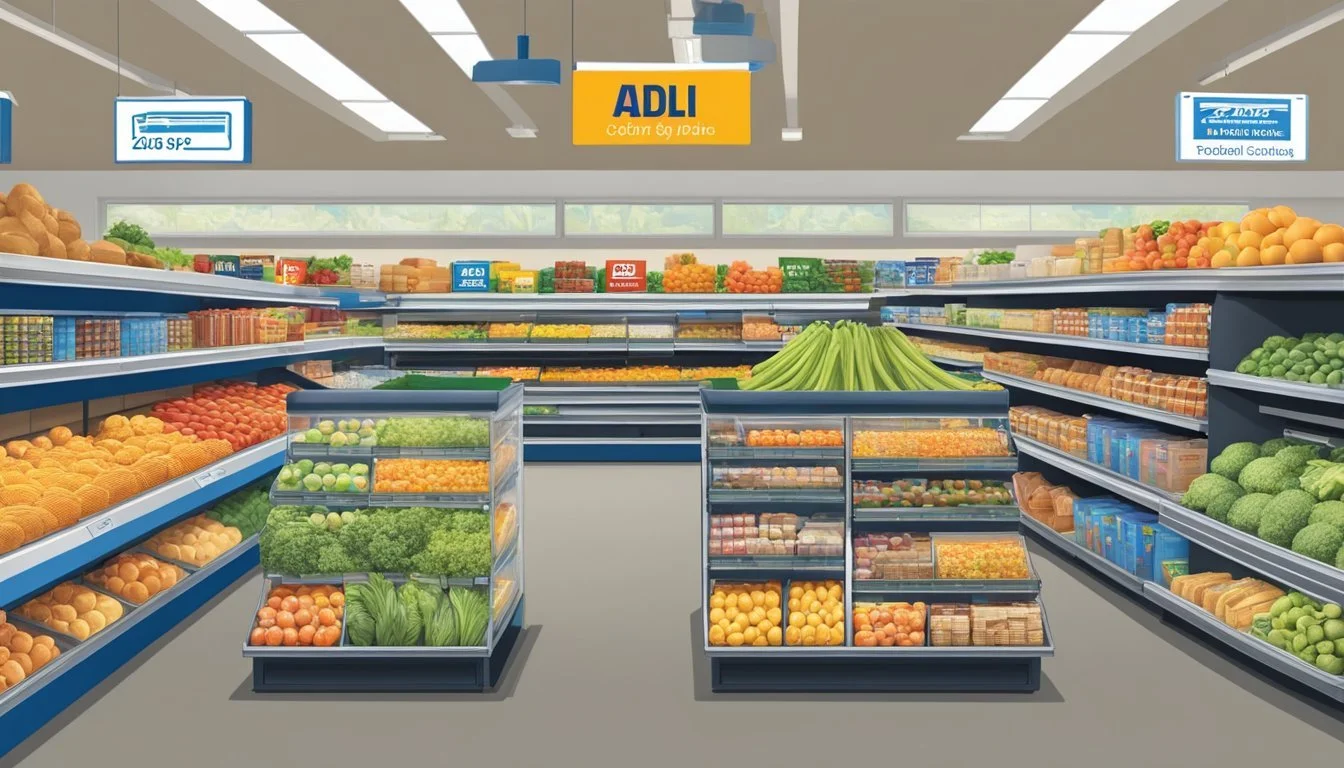Is Aldi Cheaper Than FoodMaxx?
A Comprehensive Price Comparison
When comparing grocery store prices, Aldi and FoodMaxx are both known for offering significant savings to consumers. While prices can vary by location and specific products, Aldi generally edges out FoodMaxx in overall affordability. On average, Aldi's prices tend to be 15-20% lower than traditional supermarkets, while FoodMaxx typically offers prices around 10-15% below average.
Both chains employ cost-cutting strategies to keep prices low. Aldi uses a no-frills approach with limited product selection, store-brand items, and efficient operations. FoodMaxx operates as a warehouse-style store with a focus on bulk purchases and minimal decor. These tactics allow both retailers to pass savings on to customers.
Shoppers looking to maximize their grocery budget may find the best strategy is to split their shopping between both stores. Aldi often has unbeatable prices on staples and everyday items, while FoodMaxx can offer great deals on bulk purchases and certain specialty products. Comparing weekly ads and being flexible with brand choices can help consumers take advantage of the best deals at each store.
Understanding the Grocery Landscape
The grocery landscape has evolved significantly with the rise of discount supermarkets and store brands. These changes have reshaped how consumers shop and save on food and household essentials.
Definition of Discount Supermarkets
Discount supermarkets are grocery stores that offer products at lower prices than traditional supermarkets. They achieve this through various cost-cutting measures and efficient operations.
These stores often have a no-frills layout, limited product selection, and focus on private label brands. Many discount supermarkets require customers to bring their own bags and may charge for shopping carts.
Popular discount supermarket chains include Aldi, Lidl, and Grocery Outlet. These stores typically offer savings of 15-30% compared to conventional supermarkets.
Rise of Store Brands
Store brands, also known as private label products, have gained significant market share in recent years. These are products manufactured for and sold under a retailer's name.
Major retailers like Walmart offer their "Great Value" brand, while Kroger has "Simple Truth" and "Private Selection". Store brands often provide comparable quality to national brands at lower prices.
The growth of store brands has been driven by:
Improved quality and packaging
Increased consumer acceptance
Retailer focus on developing unique products
Cost savings for budget-conscious shoppers
Many discount supermarkets rely heavily on store brands, with some offering up to 90% private label products.
Grocery Store Presence in New York
New York's grocery landscape is diverse, featuring a mix of national chains, regional supermarkets, and local independent stores. Discount supermarkets have been expanding their presence in the state.
Aldi has over 100 stores in New York, with plans for further expansion. Other discount chains like Lidl have also entered the market, particularly on Long Island.
Traditional supermarkets like Stop & Shop and ShopRite maintain a strong presence. Whole Foods and Trader Joe's cater to specialty and organic markets.
New York City's dense urban environment has led to unique grocery solutions:
Smaller format stores
Online delivery services
Bodega-style corner stores
These options provide New Yorkers with various choices for their grocery needs.
Price Comparison Strategies
Effective price comparison between Aldi and FoodMaxx requires a systematic approach. Shoppers can employ several tactics to accurately assess which store offers better value across different product categories.
Unit Price Analysis
Unit price is a crucial metric for comparing costs between stores. It breaks down the price per ounce, pound, or individual item. This allows for accurate comparisons even when package sizes differ.
To calculate unit price, divide the total price by the quantity. For example, if a 16-ounce jar of peanut butter costs $3.20, the unit price is $0.20 per ounce.
Many stores display unit prices on shelf labels. If not, shoppers can use a calculator or smartphone app to determine this value quickly.
Unit price analysis helps identify which store truly offers the best deal, regardless of package size variations.
Price Comparison Across Categories
When comparing Aldi and FoodMaxx, it's important to look at prices across various product categories. This provides a more comprehensive view of overall savings potential.
Key categories to compare include:
Produce
Dairy
Meat
Pantry staples
Frozen foods
Household items
Prices may vary significantly between categories. One store might offer cheaper produce while the other has better deals on pantry items.
Creating a shopping list with common purchases from each category allows for a more accurate comparison. This method helps shoppers determine which store aligns best with their specific buying habits.
Incorporating Coupons and Sales
Factoring in coupons and sales can significantly impact price comparisons between Aldi and FoodMaxx. While Aldi rarely offers coupons, they frequently have special buys and seasonal discounts.
FoodMaxx may provide more traditional couponing opportunities and weekly sales. Shoppers should:
Check store circulars for both chains
Look for digital coupons on store apps or websites
Consider manufacturer coupons for brand-name items at FoodMaxx
Timing purchases to align with sales can lead to substantial savings. However, it's important to compare sale prices to regular prices at the competing store to ensure it's truly a better deal.
Grocery Shopping for Savings
Smart shopping strategies can significantly reduce grocery expenses. Implementing budget-friendly practices and taking advantage of store offerings allows consumers to maximize their purchasing power.
Maximizing Grocery Budget
Generic items often provide substantial savings compared to brand-name products. These alternatives typically offer similar quality at a fraction of the cost. Consumers can stretch their budget by opting for store-brand cereals, canned goods, and pantry staples.
Planning meals around sales and seasonal produce helps reduce overall spending. Many stores offer weekly specials on fresh items. Buying in bulk for non-perishable goods can lead to long-term savings, especially for frequently used items.
Comparing unit prices rather than package prices ensures the best value. This practice helps shoppers identify true bargains across different brands and sizes. Using cash or a predetermined grocery budget can prevent overspending and impulse purchases.
Loyalty Programs and Discounts
Store loyalty programs offer valuable benefits to regular shoppers. These programs often provide exclusive discounts, personalized coupons, and points that can be redeemed for future purchases. Many chains offer digital coupons through their apps, making savings easily accessible.
Timing purchases around promotional periods can yield significant discounts. Stores frequently run special sales during holidays or at month-end. Some loyalty programs offer additional savings on specific days of the week or for certain product categories.
Combining manufacturer coupons with store discounts can result in substantial price reductions. Many retailers allow "stacking" of different promotional offers. Some stores also price match competitors' advertised deals, providing an opportunity for savvy shoppers to secure the lowest prices without visiting multiple locations.
Assessing Quality and Variety
When comparing Aldi and FoodMaxx, quality and variety play crucial roles in determining overall value. Both stores offer diverse selections, but differences emerge in specific product categories and availability.
Fresh Produce Selection
Aldi typically provides a compact yet diverse produce section. The store focuses on essential fruits and vegetables, often at competitive prices. Seasonal offerings rotate regularly, ensuring freshness.
FoodMaxx, on the other hand, tends to offer a wider variety of produce. Their selection often includes more exotic fruits and vegetables alongside staples. The larger floor space allows for greater diversity in organic and conventional options.
Quality can vary at both stores, so inspecting items before purchase is advisable. Aldi's produce turnover is generally quick due to limited stock, potentially resulting in fresher items.
Meat and Dairy Offerings
Aldi's meat selection is typically smaller but includes popular cuts at affordable prices. Their dairy section offers essentials like milk, cheese, and yogurt, with an emphasis on store-brand products.
FoodMaxx usually provides a more extensive meat department with a wider range of cuts and varieties. Their dairy section often includes more brand-name options alongside store brands.
Both stores maintain quality standards, but FoodMaxx may offer more choice in organic and specialty meats. Aldi's focus on private-label products can lead to cost savings in the dairy aisle.
Availability of Pantry Staples and Snacks
Aldi excels in offering a curated selection of pantry staples and snacks. Their store-brand products cover most essentials at competitive prices. The limited selection simplifies shopping but may not cater to all specific preferences.
FoodMaxx typically provides a broader range of pantry items and snacks. Their aisles include more national brands alongside store brands, offering greater variety. This can be beneficial for shoppers seeking specific products or brands.
Both stores stock common staples like flour, sugar, and canned goods. Aldi's snack options often include unique, rotating specialty items. FoodMaxx's larger selection may appeal to those who prefer more choice in their pantry and snack purchases.
Store-by-Store Analysis
Aldi and FoodMaxx offer competitive pricing on groceries, with some key differences in their approach. Other major retailers like Walmart also factor into the budget grocery landscape.
Comparing Aldi and FoodMaxx
Aldi focuses heavily on store brands, allowing for lower prices across many staple items. Their no-frills store layout and limited selection help keep costs down. FoodMaxx takes a slightly different approach, offering a mix of store brands and name brands at discounted prices.
Produce prices tend to be comparable between the two, though selection may vary. Aldi often has lower prices on dairy and eggs. FoodMaxx frequently offers better deals on larger package sizes.
Both stores run weekly sales, but Aldi's special buys on non-grocery items can provide additional savings. FoodMaxx typically has a wider selection of ethnic and specialty foods.
Considering Other Retailers
Walmart competes closely with Aldi and FoodMaxx on grocery prices. Their Great Value store brand matches or beats many Aldi prices. However, Walmart's larger stores can make quick trips less convenient.
Kroger and Target aim for a middle ground, with store brands priced competitively against discounters. Their sales and loyalty programs can yield significant savings for regular shoppers.
Trader Joe's, while not a traditional budget retailer, offers unique store brand items at reasonable prices. Their selection appeals to shoppers seeking affordable specialty products.
• Aldi: Lowest overall prices, limited selection • FoodMaxx: Low prices, wider variety • Walmart: Competitive pricing, one-stop shopping • Kroger/Target: Mid-range prices, strong loyalty programs • Trader Joe's: Affordable specialty items
Specific Product Comparisons
Aldi and FoodMaxx compete closely on pricing across key grocery categories. A detailed look at individual product comparisons reveals nuanced differences in affordability between the two stores.
Dairy and Eggs Showdown
Aldi often edges out FoodMaxx in dairy pricing. A gallon of milk at Aldi typically costs $0.20-$0.50 less than at FoodMaxx. Large eggs show a similar trend, with Aldi offering dozen packs about $0.30 cheaper on average.
Cheese presents a mixed picture. While Aldi's store-brand cheddar blocks are usually priced lower, FoodMaxx sometimes offers better deals on shredded varieties.
Butter prices fluctuate, but Aldi maintains a slight advantage most weeks.
Meat and Poultry Face-Off
Ground beef pricing is competitive between the two stores. Aldi's 80/20 blend often matches or beats FoodMaxx by a few cents per pound.
Chicken sees more variation:
Whole chickens: FoodMaxx frequently offers lower prices
Boneless, skinless chicken breasts: Aldi typically wins by $0.50-$1.00 per pound
Staple Goods Price Check
Basic pantry items show a mixed comparison:
Item Aldi FoodMaxx Salt (26 oz) $0.49 $0.59 All-purpose flour (5 lbs) $1.15 $1.29 Sugar (4 lbs) $1.95 $2.19
Aldi maintains a slight edge on most staples, though the difference is often just pennies.
Assessing Produce and Organic Options
Conventional produce pricing varies weekly, but some trends emerge:
Bananas: Both stores price competitively, often within $0.05/lb of each other
Apples: FoodMaxx occasionally beats Aldi on popular varieties like Gala and Fuji
Avocados: Aldi typically offers lower prices, especially on bagged options
Organic produce selection is more limited at both stores compared to larger chains. Aldi generally provides lower prices on available organic items, particularly leafy greens and carrots. FoodMaxx's organic offerings tend to be priced higher but occasionally feature better sales.
Consumer Insights and Perceptions
Shoppers' views on Aldi and FoodMaxx are shaped by several key factors. Price comparisons, product quality, and overall shopping experience play crucial roles in determining consumer preferences between these two budget-friendly grocery chains.
The Impact of Location and Convenience
Aldi's rapid expansion has increased its accessibility for many consumers. With over 2,300 stores in the U.S., Aldi has become a convenient option for budget-conscious shoppers. The chain added about 120 new locations in 2023 alone, bringing its low-cost offerings closer to more neighborhoods.
FoodMaxx, while not as widespread, maintains a strong presence in certain regions. Its strategic locations in some areas give it an edge for local shoppers who prioritize proximity. The convenience factor often influences consumer choice, especially for frequent grocery runs or last-minute purchases.
Shopping Experience and Brand Trust
Aldi's no-frills approach contributes to its cost-effectiveness. The stores are compact and straightforward, allowing for quick shopping trips. This efficiency appeals to time-conscious consumers who appreciate a streamlined experience.
FoodMaxx offers a more traditional supermarket layout, which some shoppers find familiar and comfortable. Both chains focus on providing value, but their approaches differ. Aldi emphasizes its house brands, with over 90% of products being private label. This strategy allows for significant price reductions compared to national brands.
Consumer trust in these budget retailers has grown over time. A study by Retail Feedback Group found that Aldi received high scores for value, challenging established supermarkets. This perception of value, combined with improving product quality, has helped Aldi gain loyal customers.
Economic Factors and Grocery Pricing
Economic forces significantly impact grocery prices at retailers like Aldi and FoodMaxx. These factors shape the cost of items on store shelves and influence consumer purchasing decisions.
Inflation and Grocery Bills
Inflation has pushed food prices upward in recent years. The U.S. Department of Agriculture reports that grocery prices rose 11.4% in 2022, far outpacing overall inflation. This increase affects all retailers, including Aldi and FoodMaxx.
Consumers feel the pinch as their grocery bills climb. A basket of goods that cost $100 in 2020 now costs around $111. This price hike forces shoppers to seek out better deals and compare prices more carefully.
Some retailers absorb part of the cost increases to maintain competitive pricing. Aldi, known for its low-price strategy, may be better positioned to weather inflationary pressures.
The Role of Supply Chains
Supply chain efficiency directly impacts grocery prices. Retailers with streamlined logistics can often offer lower prices. Aldi's limited inventory and private-label focus contribute to a lean supply chain.
Transportation costs affect pricing as well. Fuel prices and shipping rates influence the final cost of goods. Retailers closer to distribution centers may have an advantage.
Inventory management also plays a crucial role. Stores that minimize waste and optimize stock levels can keep prices lower. Both Aldi and FoodMaxx employ strategies to reduce overhead and pass savings to customers.
Global supply chain disruptions, like those seen during the COVID-19 pandemic, can lead to price fluctuations. Retailers' ability to adapt to these challenges affects their pricing strategies.
Final Verdict
Aldi and FoodMaxx are both strong contenders for budget-conscious shoppers. Each offers distinct advantages that cater to different consumer needs and preferences.
Who Is the Winner for Low Prices?
Aldi edges out FoodMaxx as the overall winner for low prices. Aldi's no-frills approach and focus on private-label products allow them to offer consistently lower prices across a wide range of items. Their weekly grocery costs average around $185, compared to slightly higher prices at FoodMaxx.
FoodMaxx takes a close second place, with prices typically 21% lower than the average supermarket. This puts them in a similar price range to Aldi, making them a strong alternative in areas where Aldi may not be available.
Walmart often ranks third in price comparisons, offering competitive rates but generally not matching the rock-bottom prices of Aldi or FoodMaxx.
Best Options for Different Consumer Needs
Aldi is ideal for shoppers who prioritize savings above all else and don't mind a limited selection. Their smaller stores and efficient operations translate to lower overhead costs and cheaper prices.
FoodMaxx appeals to customers who want low prices but desire a wider variety of products, including more name-brand options. Their larger stores offer more choice, which can be beneficial for one-stop shopping.
For those seeking a balance between price and selection, Walmart might be the best fit. They offer a vast array of products at competitive prices, though not always the absolute lowest.










